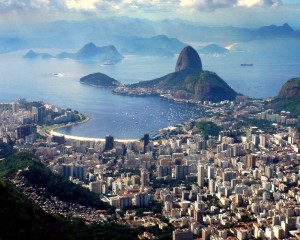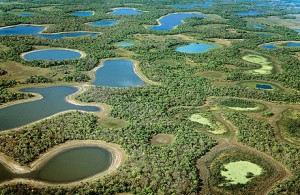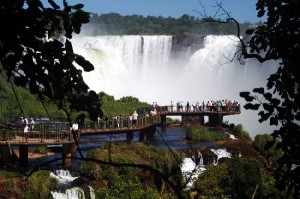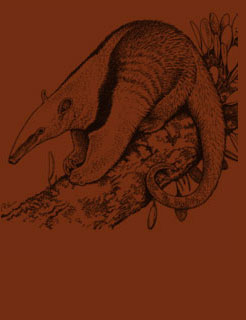 The giant of South America is the continent’s largest country and fifth in the world. Its 8.5 million square kilometers of land are covered by beaches, huge cities, waterfalls, 191, 5 million people, carnival, football and the jungle, much forest, the overwhelming green of the Amazon rainforest lining 3.6 million km ² in North Central region. But it is not unique. To the south, the Parana forest is home to the Iguassu Falls, natural wonder that it shares with Argentina and it is separated by the river of the same name.
The giant of South America is the continent’s largest country and fifth in the world. Its 8.5 million square kilometers of land are covered by beaches, huge cities, waterfalls, 191, 5 million people, carnival, football and the jungle, much forest, the overwhelming green of the Amazon rainforest lining 3.6 million km ² in North Central region. But it is not unique. To the south, the Parana forest is home to the Iguassu Falls, natural wonder that it shares with Argentina and it is separated by the river of the same name.
It is the only Latin American country where people speak Portuguese as official language and shares borders with almost all its neighbors, except Ecuador and Chile.
Unlike Argentina, the seasons are not well defined; being predominantly tropical climate, with little cold temperatures, with the exception of the southern region, where winter is felt, being below the Tropic of Capricorn.
Brasilia (Federal District) is the capital of the country, although not the only pole of attraction. Rio de Janeiro (Rio de Janeiro) is the temple of the carnival and one of the most visited cities, with Copacabana and Sugarloaf as icons. Also San Pablo (State of São Paulo), Florianópolis (Santa Catarina), Porto Alegre (Rio Grande do Sul), Belo Horizonte (Minas Gerais), Curitiba (Paraná) and Salvador (Bahia), among others, are receiving as major cities thousands of tourists each year, with the help of its range of activities for visitors.
Because of their great distances, Brazil has an extensive network of air terminals that keep you connected to the outside and inside borders. The international airports of São Paulo (Guarulhos), constant traffic, at 25 km northeast of the city, and Rio de Janeiro (Galeao)-20km to the north of the city are some of the most important receiving external flights and where you can fly across the country. There are other small regional airports receiving flights, such as Florianópolis and Foz de Iguassu near Argentina.
The wonderful city, nickname of Rio de Janeiro, is the second largest after San Pablo. The music of the samba and carnival take over the city during February and tourist beaches such as Copacabana and Ipanema, have a large price discount. Christ the Redeemer atop Corcovado Mountain, Sugar Loaf and Maracana Soccer Stadium are the most famous attractions. In 2016 hosting the Olympic Games and in 2014, Brazil will host the World Cup.
The monumental San Pablo is the largest financial center in Latin America and the perfect location for business tourism. It is the largest Brazilian city.
More information at; www.embratur.gov.br
What to see
Since Brazil is a destination full of natural attractions in this section we limit ourselves to the description of the Amazon and the North and South Pantanal, on a similar geographical, climate and biodiversity to the environment surrounding Yacutinga Lodge.
The Pantanal Marshlands
The Pantanal is the world’s largest flood plain located in the heart of Brazil. Its more than 230,000 km ² are scattered throughout the Brazilian states of Mato Grosso and Mato Grosso do Sul, central-western Brazil, Paraguay and Bolivia. This ecological paradise is home to thousands of animal species, including birds, fish, reptiles and mammals, making it the third largest environmental reserve. This abundance of wildlife the site becomes more conducive to Brazil to observe the flora, fauna and fishing practice – permitted only between March and October. The Pantanal mato grossense is so diverse that was divided into north and south. Each Pantanal has natural characteristics, and consequently, activities and best times to visit. Pantanal National Park was created in 1981, but only in 1993 was designated as an Area of Environmental Conservation. For the Pantanal National Park one must go by boat, departing from Puerto Jofre, accompanied by a guide. It is essential to use insect repellent, sunscreen, hat, light clothes and boots. There being no structure within the park service, it is advisable to carry supplies light, fruit and water and can stay overnight. It is not allowed to hike, fishing and hunting are prohibited between November and February, and night observation of alligators on their own. The backbone of the Pantanal is the Paraguay River, which divides the region from north to south. A boat tour is an obligation.
This area is ideal for horseback riding, boating, fishing safaris and piranhas, among other activities. As for the Pantanal cuisine, exotic flavors stand out as the stock piranha and alligator meat. The best time to visit the Pantanal is from May to September, a period of lower rainfall. Between March and April, is ideal for wildlife watching, as the water recedes. Between October and February rains in quantity and abundance of mosquitoes, the heat is intense and the road is almost impassable Transpantaneira.
The dry season is between May and September and temperatures decline. From October to February, the rainfall and average temperature is 32 º C. The intermediate station, the best to visit, with little rain is good for viewing wildlife.
To access the northern Pantanal airway using the airstrip at the Hacienda Acurizal (RPPN / Foundation Eco-tropic), a flight hour and 30 minutes by boat. The nearest town is Poconé (102 km from Cuiabá). By land, access via Route MT-060, starting from Cuiabá to Poconé, by 102 km on paved road and continue on Route Transpantaneira by 147 km more until Puerto Jofre. By boat from Puerto Jofre to the Park, sailing 4 hours. Road links Transpantaneira Poconé and Puerto Jofre. Are 149 km of land, with 126 wooden bridges. Along the way it is possible to observe wildlife, especially alligators, capybaras and birds, including wild animals. In the period of rains the road is in poor condition from 65 km.
 South Pantanal
South Pantanal
In the southern Pantanal stands Pantanal Park Road. Is 117 km of dirt road and 87 wooden bridges that join the Buraco das Piranhas Corumbá. If the tour is self seen wildlife such as alligators, capybaras and deer are in the creeks and channels that carry water from swamps and rivers. Corumbá is the river port on the Paraguay River, on the border with Bolivia, western Brazil. It is one of the largest cities in Mato Grosso do Sul and one of the main points of departure for the Pantanal. It is 435 km away from Campo Grande, capital of the state. Aquidauana is a lush paradise populated by species of wild fauna and flora that extend across an endless plain that is flooded. It is one of the entrance gates to the south side of the Pantanal National Park. Miranda is the South Portal of the Pantanal, as the vast area that floods beginning in the city. The meeting of the crystalline waters of the Rio Salobra the murky waters of the Rio Miranda is a must-see attraction. The community of Terena Indians is the second largest ethnic group in the state. It is one of Brazil’s indigenous groups that are most assimilated civilization.
By land is accessed from Campo Grande by the BR-262, the first city is Aquidauana to 148 km, 73 km more than Miranda. From then on there shoulders and the crossing of livestock and wild animals are common. To Corumbá is 370 km.
Amazonas
Appoint Brazil is talking about Amazon and everything in it is exorbitant. This bewildering forest covers more than half the country is Rio and the biggest in the world. Its name comes from the homonymous river, with a basin of 4,320,000 and 15,000 k2 tributaries endless stream of 6,800 km long that feeds the ocean green. It is the largest reserve of natural resources represents a total of 54% of tropical forests on Earth. It covers nine countries in Latin America: Brazil, Colombia, Peru, Venezuela, Ecuador, Bolivia and Guyana. His oppressive tropical climate favors the development of dense and lush vegetation, evergreen, and a population of over one million animal species (the underworld to inhabit by more than 500,000 species of insects and spiders). During the rainy season the river level rise between 10 to 15 meters, inundating millions of acres.
All the subtropical flora of South America is present in the “planet’s lung”, where there are still plenty of species to be classified.
Native tribes have lived here for over 20,000 years and still survive some who have no contact with the outside of the forest.
The Amazon rainforest is vertically divided into four levels. The emergent layer is the roof of the jungle, here the giant trees reach 70 meters high and 4 meters diameter. The predominant fauna includes eagles, parrots, bats, butterflies and monkeys. The canopy is the first level, with trees that rise between 30 and 50 meters, the leaves act like little solar panels. Home is estimated that between 70 and 90% of the life of the jungle. The understory remains in shadow by the dim light that enters orchids, lichens and ferns lining in this level. Finally, the ground is the darker layer, since it receives less than 2% of sunlight. These enclaves wild are just some of the many destinations offered by Brazil.



